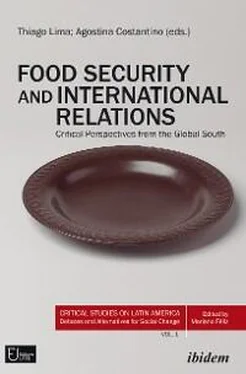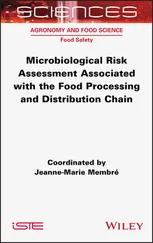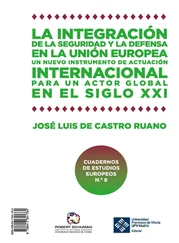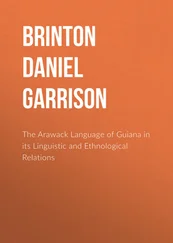The problem of food and nourishment no longer refers only to the lack of food. Undernourishment has become an increasingly notable problem on an international level. Strongly present in a number of developed countries, particularly in the US, a diet that leads to people becoming obese is spreading around the globe. Josué de Castro noted halfway through the last century that a large percentage of the poor suffered from hidden hunger, i.e., they were able to fill their stomachs, but they still lacked nutrients. The problem is now taking on another dimension: stomachs are becoming too full, leading to obesity and a host of nutritional disorders. There are currently 38.3 million overweight children in the world: 46% of them are in Asia, and 25% are in Africa. While childhood obesity has remained stable since 2012, adult obesity has increased since 1975. Today, 672 million people worldwide are obese (FAO, 2018). What many people still overlook is that our diets are not simply related to flavor and tradition. They are also the result of international dynamics driven by geopolitical factors, the trajectory of capitalism or other forces.
In the field of international relations, the issue of hunger still lacks prominence. Fortunately, the human security approach has helped bring it to the forefront, reverberating into discussions about rights, public policy and economic arrangements. The human security approach helps make it possible to understand the concept of food security. We will now take a critical look at this topic and the need for a multidimensional analysis of agrifood, as presented in the chapters of this collection.
2 Human Security: people first
The human security approach has a controversial origin. The international relations literature generally locates it within the debate on the expansion of international security studies, with an emphasis on the post-Cold War scenario. It originates, however, in debates among developmental economists. They thought about the humanization of the economy through the concerns raised by new threats to individuals (ROCHA, 2017). Some authors claim that human security was almost exclusively a contribution of the UN, while others argue that the organization was the birthplace of only some of the key insights (OWEN, 2008; MACFARLANE, KHONG, 2006).
In any case, the topic of human security emerges as both an instrument for advocacy and an intellectual device calling for the unification of protection, welfare and rights concerns inherent to individuals. At its core is the guarantee of “social security” (TADJBAKHSH, 2005). There is an attempt to identify threats and ways to mitigate them, focusing on the protection of people and communities, rather than the security of states, thus emphasizing the importance of human rights (KALDOR, 2007). People should be protected regardless of whether threats come from anthropogenic activities or natural events, whether they are within or outside the state, or whether they are direct or structural (THAKUR, 2004). For Thakur (2004), although this approach results in the loss of a certain analytical rigor, it is more important to be inclusive when defining threats (THAKUR, 2004) 2 2 A narrower approach focuses on the human consequences of armed conflict and the dangers they present to individuals—primarily civilians—by repressive governments and situations of state failure. This approach has a greater influence on the security agenda and focuses on threats to physical integrity rather than incorporating issues related to human development and empowerment, as in the earlier approach. Modern conflicts reflect a high level of civil wars and state collapse, resulting in a high rate of civilian victimization and displacement, particularly for women and children (EVANS, 2004; KRAUSE, 2004; MACFARLANE & KHONG, 2006) 3 The HDR tracks and monitors the progress of humanity and ranks countries with its Human Development Index (HDI). The UNDP also produces Regional Reports, which propose actions that would enable each country to achieve human development (UNDP, 2015; UL HAQ, 1995). 4 Both instruments of international law were made possible by the Canadian-led coalition and the advocacy efforts of the Human Security Network (HRH), comprising Austria, Canada, Chile, Costa Rica, Greece, Ireland, Jordan, Mali, the Netherlands, Norway, Switzerland, Slovenia and Thailand, with South Africa as an observer. Japan was invited but declined to participate due to the emphasis on humanitarian intervention and the constitutional restriction on using force without authorization from the UN Security Council.
.
At the same time, poverty, natural disasters and epidemics are now being discussed as threats to international security itself, which ends up broadly influencing the debate on development and security, particularly as they are vocalized through the UN (ROCHA, 2017). In Brazil, for example, the threat of hunger is considered through the internalization of the human right to adequate food (HRAF) (LOPES, FEITOSA, Ch. 2).
Human security as a policy approach is defined for the first time in the 1994 Human Development Report (HDR) by the United Nations Development Program (UNDP) (UNDP, 1994). The term, however, had previously been used in the 1992 report, An Agenda for Peace, as well as being cited five times in the 1993 HDR, emphasizing the need for a “people-centered development” (UNDP, 1993) 3 3 The HDR tracks and monitors the progress of humanity and ranks countries with its Human Development Index (HDI). The UNDP also produces Regional Reports, which propose actions that would enable each country to achieve human development (UNDP, 2015; UL HAQ, 1995). 4 Both instruments of international law were made possible by the Canadian-led coalition and the advocacy efforts of the Human Security Network (HRH), comprising Austria, Canada, Chile, Costa Rica, Greece, Ireland, Jordan, Mali, the Netherlands, Norway, Switzerland, Slovenia and Thailand, with South Africa as an observer. Japan was invited but declined to participate due to the emphasis on humanitarian intervention and the constitutional restriction on using force without authorization from the UN Security Council.
. However, the 1994 HDR was responsible for making the idea more widespread. It sought to influence the debate, as well as international cooperation, on development and security actions among member states and other UN institutions. The report states that:
Human security can be said to have two main aspects. It means, first, safety from such chronic threats as hunger, disease and repression. And second, it means protection from sudden and hurtful disruptions in the patterns of daily life—whether in homes, in jobs or in communities. Such threats can exist at all levels of national income and development. (UNDP, 1994, p. 23)
The Report also states that there should be two components for understanding human security: (i) freedom from fear—freedom from threats that impede access to people’s rights, security and guarantees to life; it is thus essential to be free from the fear of physical violence and fear more broadly; and (ii) freedom from want—individuals free from poverty, for example, through stable access to healthcare and the economy.
All the reports since 1990 have been based on the premise that a nation’s wealth is its people and that it is necessary to broaden the possibilities for their personal fulfillment, rather than solely in terms of the nation’s productivity. This premise is influenced by the conception of broadening the substantive freedoms of individuals (Sen, 2008). In other words, while an increase in income or GDP enables people to expand their freedoms as citizens, having access to healthcare, education or civil and political rights and freedom of expression, for example, are other determinants of freedoms that are equally important to human development. This means that human security can be underpinned by human development.
Читать дальше












